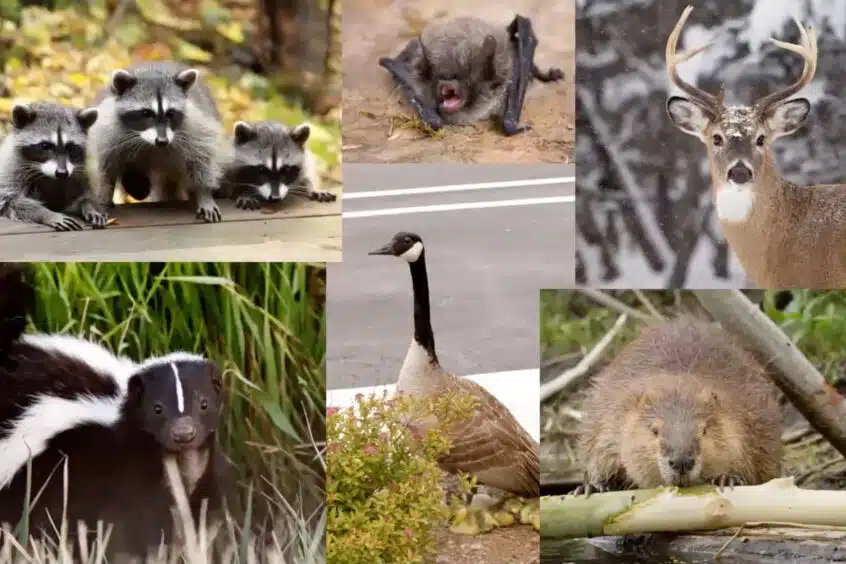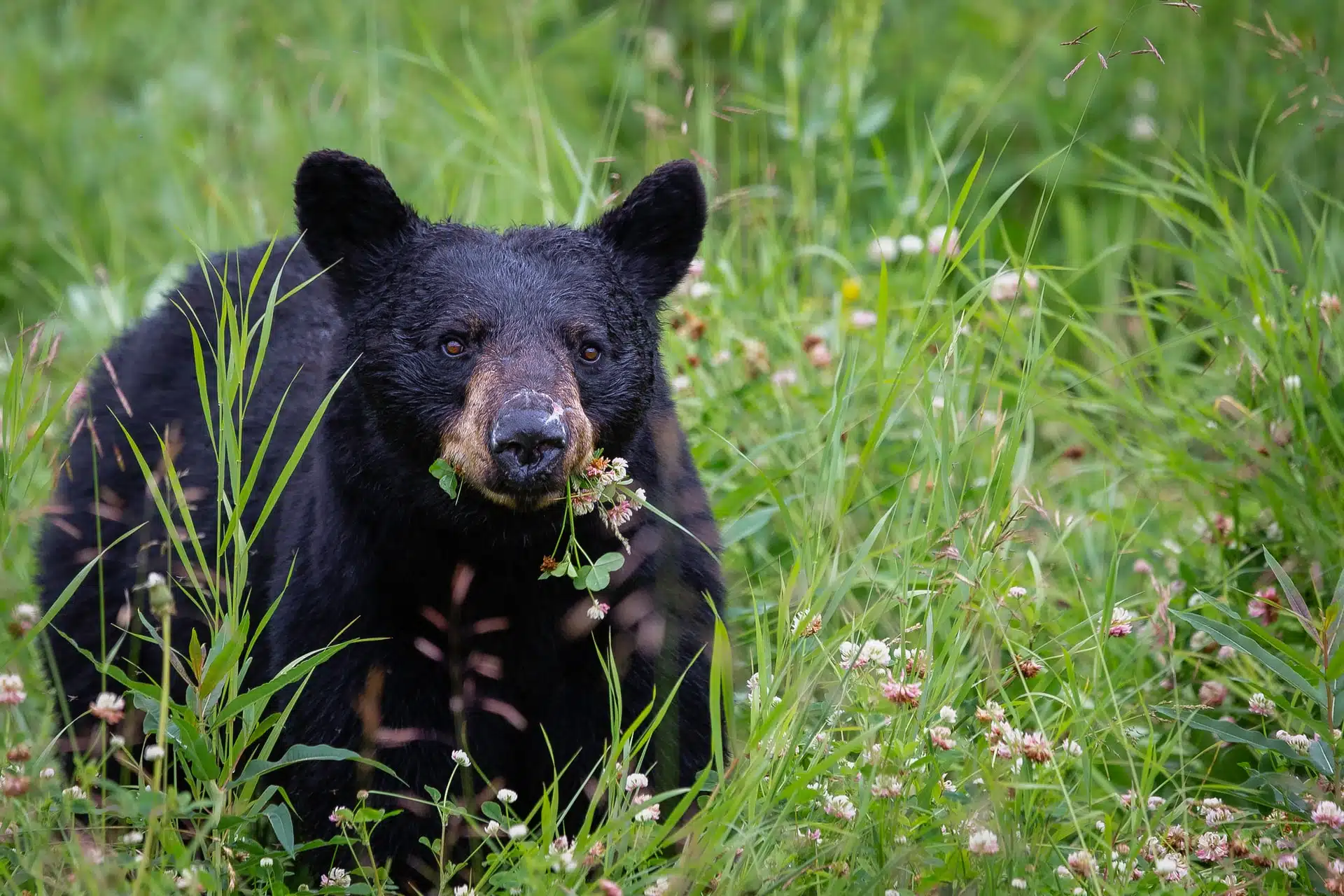Tips From a Wildlife Expert on How to Safely Share Nature with Bears, Wolves, Moose, and More
BY RILEY CHERVINSKI, COMMUNICATIONS AND EVENTS COORDINATOR, OCEAN PROGRAM OF CPAWS MANITOBA
One of the best parts of getting out into nature is to catch a glimpse of Manitoba’s beautiful wildlife. Nearly all those encounters are brief. But some can be dangerous.
Janine Wilmot is a Human-Wildlife Conflict Biologist with the Province of Manitoba who helps deliver Manitoba’s Wildlife Smart program.
She shared tips for how to safely share nature with 170 participants in a CPAWS Manitoba webinar hosted in June 2021.
Wilmot discussed where and why people find themselves in potentially dangerous encounters, actions to take to reduce the risk of a conflict, and how to respond appropriately when interacting with large wildlife.
Read on for valuable tips and recommendations for wildlife encounters below, and watch a recap of the informative webinar here.
Why Are There Dangerous Encounters With Wildlife?
There are four main factors that can contribute to dangerous encounters with wildlife:
- An animal caught off-guard and in close range;
- An animal attracted by the smell of food;
- Animals that have become habituated to humans and have lost their natural fear; and
- Food conditioning — the result of humans feeding wildlife.
Where Are We at Risk for These Encounters?
The short answer is anywhere. Urban areas, rural areas, roadways, landfills, and wilderness areas can all bring dangerous encounters with wildlife.
In general, the less human development or activity in an area, the greater the risk of a dangerous encounter.

Photo by Brett Jordan on Unsplash.
Which Species Are Potentially Dangerous?
Any species of wild animal can be dangerous if it feels threatened. Canada geese, beavers, deer, and raccoons have all been known to attack people. A few years ago, a woman was attacked by a white-tailed deer in Manitoba. The deer’s hooves wounded her thigh and just missed severing her femoral artery, which could have made the attack fatal.
Large wildlife that are potentially dangerous include moose, black bears, cougars, elk, wolves, and others.
How Should I Respond In An Encounter With Wildlife?
Do:
- Remain calm and assess the situation. Try to understand what message the animal’s behaviour is sending before you act.
- Carry deterrent spray during all outdoor excursions.
- Get inside a nearby vehicle or building if possible.
- Pick up small children and pets. Sudden movements or noise could attract the attention of the animal.
- Keep the animal in sight at all times.
- Keep your backpack on for protection if attacked.
Don’t:
- Don’t approach or try to crowd an animal.
- Don’t drop your pack or throw food to try and distract the animal. This provides them with a food reward and that encourages the animal to approach other people in the future.
- Don’t run unless you are extremely close to safety. Predators can run very fast, and fleeing could trigger a chase response.
- Don’t turn your back on the animal. This can trigger an attack, particularly with cougars.
- Don’t make direct eye contact. This could be perceived as a threat.
- Don’t crouch down. This could make you look more like prey.

Moose photo by Zachery Perry on Unsplash.
A Closer Look at Wildlife Species in Manitoba
Deer Family
White-tailed deer, moose, and elk are widely distributed through southern and mid-range Manitoba.
- Breeding occurs in the fall. Females are more protective of their young in the spring, and males are more aggressive during the fall. Your risk of a negative encounter increases at these times.
- Never approach the young. Deer and elk will leave their young for hours at a time while looking for food, and human scent on a deer could cause it to be abandoned.
- Stay at least 30 metres away in an encounter.
- These animals have been known to charge people and can cause injury with their hooves and antlers. Moose are known to charge without warning.
- Signs that the animal is agitated or stressed include foot stomping, snorting, and thrashing bushes with their antlers.
- Stay upright if attacked. You are at greater risk of serious injury on the ground. Cover your head with your arms and move to shelter.
Wild Boar
Wild boar are not native to Manitoba, but there are scattered populations throughout the province. Most reports of wild boar are around Spruce Woods Provincial Park.
- Males tend to be solitary, while females and their young live in family groups known as sounders.
- Wild boar have a particularly good sense of hearing and smell.
- They are territorial and protective of their young.
- They can reach speeds of up to 40 kilometres an hour.
- They present a significant risk of injury if they attack because they have sharp tusks and can weigh up to 300 pounds.
- If a wild boar attacks, climb a tree or elevated object at least two metres high, as they cannot climb trees.
- If it’s not possible to escape, try to remain standing and fight back aggressively.
Coyotes
Manitoba has an abundant coyote population. Approximately 3,000 to 8,000 are harvested each year by trappers, an amount that doesn’t even begin to put a dent in the population.
- Coyotes are found throughout southern and central Manitoba as far north as Thompson.
- Coyotes are much smaller than wolves (30 to 35 pound range).
- Many reported encounters with coyotes involve domestic dogs as an attractant.
Here’s what to do during a coyote encounter:
- Be aggressive and continue hazing the coyote until it leaves the area.
- Maintain eye contact and continue facing it at all times.
- Make yourself loud and large. Yell, clap your hands, and stomp your feet.
- Raise your jacket over your head to appear larger.
- Throw objects such as rocks or sticks if necessary.

Wolf photo by Milo Weiler on Unsplash.
Wolves
Manitoba is home to approximately 4,000 grey wolves. They prefer to live in forest habitats and are more active at night.
- Wolves are typically between 70 and 130 pounds (with females about 20 per cent smaller than males).
- Wolves can run for long periods of time and reach speeds up to 65 kilometres per hour.
- A wolf that feels that you pose a threat to itself or its family could display defensive behaviours. Typically, this happens when a person or dog approaches a den, rendezvous site, or kill site, when pups are nearby, or if it feels cornered.
- Defensive behaviours include grappling, barking, or snarling.
Here’s what to do during a wolf encounter:
- If a wolf displays defensive behaviours, make yourself as nonthreatening as possible. Slowly wave your arms over your head and speak calmly while backing away from the area.
- If a wolf approaches you or follows you, haze the animal to ensure it associates humans with being a threat.
- In the unlikely event that a wolf does attack, fight back aggressively using any weapon available, including sticks or rocks. Strike at the animal’s eyes and nose.
- Climb a nearby tree or elevated surface at least two metres off the ground.
Cougars
There is currently a growing presence of cougars in the province, and Manitoba is on the cusp of having an established breeding population of cougars.
- Cougars are large, solitary mammals and adept tree climbers
- They prefer to stalk their prey using cover and relying on the element of surprise and a short, intense burst of energy to secure their prey.
- Cougars have been known to attack people.
Here’s what to do during a cougar encounter:
- Maintain eye contact and do not turn your back on the animal. A cougar’s preferred hunting method is to launch a surprise attack from the rear.
- A cougar that feels you pose a potential threat could display defensive behaviours such as growling or hissing.
- Move away slowly and calmly. A cougar that is staring intensely, following you, and hiding is assessing its success of a potential attack.
- Make yourself large and loud to convince the cougar that you are a threat.
- A cougar will attack with its paws and then shift to grasp with its teeth if it is met with no resistance. Being particularly aggressive at this point makes it more likely that the cougar will break off its attack.
- Always fight back during a cougar attack.
Black Bears
Manitoba has three species of bears: polar bears, grizzly bears, and black bears. There are approximately 30,000 black bears in Manitoba.
- Black bears have an excellent sense of smell — they have 100 times the nasal mucosa of humans and can smell potential food up to eight kilometres away.
- They are superior climbers and strong swimmers and can reach speeds of 50 kilometres per hour when running.
- Black bears are focused on finding food. They have only about seven months to consume enough food for the year, which often leads them to food sources left accessible by humans.
How great is the risk of black bears?
On average, the province receives 1,500 reports each year regarding black bear interactions. Of those reports, less than one per cent are considered dangerous.
The risk of being killed by a black bear is extremely low. In fact, Manitobans are:
- 68 times more likely to be killed by a domestic dog;
- 180 times more likely to be killed by a bee or wasp;
- 374 times more likely to be killed by lightning; and
- 90,000 times more likely to be killed by another person
To reduce the risk of a dangerous encounter with a black bear, always carry deterrent spray, make noise while hiking in the backcountry, keep your distance, and secure foods and other attractants when outdoors.
This webinar was part of our Lunch and Learn series to encourage Manitobans to safely spend time outdoors, appreciating the beauty of our wild spaces and exploring nature in our own backyards.
This program is possible thanks to the generous support of Safe at Home, The Winnipeg Foundation and the Conservation Trust, a Manitoba Climate and Green Plan Initiative delivered by the Manitoba Habitat Heritage Corporation.


